How to degrease a surface before painting or gluing: effective means and methods of treatment
The problem of how to degrease a surface may not seem too complicated.Many people periodically use solvents or special liquids to prepare the surface, often without even thinking about how correctly degreasing is carried out at home. But even this case has its own nuances.
The content of the article:
What is the importance of degreasing surfaces?
All modern coatings, varnishes, paints, putties, as well as adhesive compositions were developed for application to a clean, dry, and most importantly, grease-free surface. The problem is that on any surface there is a thin microlayer consisting of:
- dust particles;
- condensed moisture absorbed into dust;
- organic microfilms;
- microscopic air bubbles that are always present under any films.
All this is packed and “sits” in micro-roughness (pores) on the surface. It doesn’t matter what material it is or where it was stored. All this microscopic dirt, especially air and moisture, prevents strong adhesion of varnish, paint, and glue to the base. Therefore, the material must first be degreased (remove the film of dirt).
What happens if you properly degrease the surface:
- electrostatic charge is compensated, so dust does not temporarily stick;
- Most of the organic matter is dissolved and mechanically erased.
Depending on how to degrease the surface and what solvent to use at home, you can remove up to 80% of contaminants. If you use several types of solvents or a special surface degreasing agent, you can remove up to 90% of deposits. This is quite enough for the surface before painting.
The level of degreasing before gluing should be higher than before painting. In addition, before degreasing the surface, the top layer is often subjected to mechanical cleaning. But this requirement applies only to metal and plastic surfaces.
For some materials, the level of contaminant removal does not exceed 60-70%, these are leather products, wood, and highly porous materials. Often the top layer cannot be degreased, since a regular solvent “clogs” (contaminates) the surface. In this case, the paint (glue) contains a substance that degreases the top layer.
Degreasers you can buy at the store
Most substances that can be used to degrease surfaces at home are volatile and quickly evaporating liquids. Almost all are toxic or aggressive, except ethyl alcohol. Therefore, before degreasing the surface, it is recommended to wear gloves and carry out the treatment itself outdoors or under a hood.
Nefras
Known as gasoline solvent or “Galosh”. The safest of all means that can be used to degrease an oily surface.It looks like a white or slightly yellowish oily liquid. It consists of naphthene-paraffin and olefin fractions of oil, purified from toxic aromatic compounds. Hazard class “4”, this is approximately the level of ethyl alcohol.
It is considered the best remedy if you need to degrease any parts of cars, components and mechanisms that come into contact with oils, lubricants, and resins. You can degrease metal surfaces before applying oil paints.
White Spirit
It is made from petroleum products with mandatory clarification or bleaching with bentonite clays. That’s why the name contains the word “white”, which means “white”. Its properties resemble high-quality bleached kerosene - naphtha mixture.
It is recommended to degrease surfaces with white spirit before painting with compounds and applying oil-fat based putties. The liquid is used as a thinner for a wide range of paints, melamine, alkyd pentaphthalic enamels. But they are all for outdoor use.

Disadvantages of White Spirit;
- High content of aromatic compounds according to GOST 313178 - up to 16%. This is more than modern unleaded motor gasoline. Therefore, you need to work only with gloves and only in a draft or under a hood.
- High content of sulfur and naphthenic acids. It is not recommended to degrease metal, such as a cleaned car body, to avoid corrosion.
- Unpleasant odor, vapors penetrate deeply into fabrics, insulation, and wood. The smell can only be removed by prolonged drying in direct sunlight for 7-8 hours.
It is best to degrease wooden and metal structures, frames, frames with white spirit before painting with pentaphthalic paints.
Antisilicone
One of the best universal products for degreasing and preparing surfaces before painting. The composition of anti-silicone includes naphthenic hydrocarbons (30-35%), naphtha clarified fraction of oil (up to 35%), isopropyl alcohol. Essentially it is highly refined gasoline with a low octane number.
According to the hazard class, antisilicone belongs to level 4. The aromatic content is 10 times less, and the sulfur content is 25 times less than in White Spirit. This does not mean that you can degrease the surface with your bare hands and work without a hood. Gasoline vapors can cause suffocation, and naphtha, if it gets on the skin of your hands, causes irritation.
It is recommended to degrease the body and elements of the chassis of cars, water pipes, and steel structures with anti-silicone before painting. Professional-grade anti-silicones do not use water, so if properly degreased, this will not lead to the appearance of bubbles or hidden corrosion under the paint layer.
Antistatic
Available in aerosol packaging, it is recommended for degreasing painted or plastic surfaces to remove dust. An antistatic agent can effectively degrease the car body to avoid the sticking of tiny micro-dust particles. Otherwise, the gloss will not work. Especially if the painting is done in a handicraft or semi-handicraft way using nitro paint.
Alkaline products
Only metal surfaces can be degreased with an aqueous solution of alkali. Alkaline compositions etch away the surface film and decompose any fats and oils (except silicone). After processing, the metal looks like new, clean, without traces of oxides or fatty films.
The process occurs quite quickly, so the degreased areas must be quickly washed with distilled water due to the volatility of the alkali.

Ethanol
Used to remove fat and oil films from the surface of metal, glass, plastic, wood and even leather. Due to the very low surface tension, it penetrates deeply into the surface microrelief, wets, and washes away dust and traces of water. It evaporates quickly, carrying away moisture and dust.
Alcohol, as a polar solvent, has one drawback. It perfectly washes away and degreases water-containing contaminants and esters. That is, traces of vegetable oil and alcohol will be degreased, but machine lubricants (oils) based on hydrocarbons will be degreased only partially. Complete degreasing does not occur.
You can also effectively treat wooden parts with alcohol mixed with acetone. After such treatment, it can be treated with a primer or varnish if bitumen shingles or glass roofing felt are glued to the wood.
A mixture of alcohol and hydrogen peroxide is used to degrease and bleach furniture veneer before applying furniture varnish. Wood dust, resin and volatile compounds are well removed from wood, which can cause stains to appear under the varnish.
Gasoline and acetone
If gasoline or any of its “relatives,” for example, Galosha or Nefras, are freely sold, then you can buy acetone only in small quantities. For example, as a nail polish remover. This is highly diluted acetone; only a limited list of contaminants can be degreased with such a liquid.
Acetone is a very strong polar solvent, an order of magnitude stronger than ethyl alcohol. Can it degrease metal and wood? Of course, acetone can clean almost any surface except porous ones. But the consumption of solvent for removing mineral oils and greases increases several times when compared with the same white spirit.
Therefore, it is better to treat heavily contaminated surfaces with a mixture of acetone and gasoline or use a ready-made solvent such as P-10.
What other methods can be used to degrease the surface?
To improve the quality of gluing or painting, additional types of processing are used:
- thermal - firing;
- mechanical - cleaning or removing the surface layer;
- chemical - dissolving durable varnish films.
Heat treatment is used only for metal and wooden surfaces. Typically, the top layer is briefly heated with a gas burner until the moisture and fatty films evaporate. At the same time, the hot flame burns away the dust.
Sandblasting machines
Use only for cleaning ceramic and metal parts. Degreasing occurs in a powerful, high-speed flow of air and sand. A jet of abrasive simply erases everything from the surface: from scale and rust to oil, varnish films and old paint.
At the same time, the microroughness of the metal changes and becomes more uniform.The surface can be painted immediately after dust has been removed.
Ultrasound Applications
Ultrasonic degreasing or washing is used as an alternative to solvents. Most of them are made on the basis of xylene, toluene, cyclohexanol, butanol, substances that are extremely toxic and carcinogenic.
It is easier to degrease a metal part by placing it in water with a small addition of surfactant. Ultrasonic waves cause water to boil on the metal, cleaning it of any organic matter even more effectively than a solvent.
The only limitation is the size and weight of the part; only small items can be effectively degreased.
Electrochemical cleaning
Used for accurate and effective degreasing, removing oxide films, and removing fatty deposits. As a rule, parts and products made of precious metals are subjected to electrochemical double-sided cleaning.
After immersion in the cleaning solution, a constant voltage is applied to the part, the metal does not dissolve, and oxygen or chlorine released at the anode dissolves all contaminants. Atomic oxygen easily oxidizes (burns) even chemically resistant silicones.
Today, this is the most highly effective way to safely degrease metal without compromising its appearance.
Features of degreasing depending on the type of surface
The effectiveness of preparation largely depends on the surface material. Some of them, for example, leather or plastic, allow only limited degreasing, and only with special means.
Hardware
For all metals (except noble ones), before degreasing the top layer, it is recommended to carry out mechanical cleaning with sandpaper or any other type of abrasive.Thus, it is possible to remove the main part - oxides, and also increase the depth of the microrelief.

Wooden crafts
Wood is a conservative material, it is difficult to degrease it, since it contains a large amount of organic substances. If preparation is necessary before painting with oil paint, then the best remedy is turpentine, only purified.
If a bleaching effect is required, after turpentine the wood is treated with pure alcohol, then with ordinary “Whiteness”.
If you have a supply of alcohol and acetone, then you can degrease the wood quite deeply. To do this, apply a napkin moistened with an alcohol-acetone mixture to the surface and place it in a bag. After a day, the product is taken out of the bag and wiped with pure alcohol. The varnish “clings” to such a surface without any priming.
For your information! To remove old varnish and oil films from old wood, restorers use a complex set of reagents. For example, you can degrease and clean the surface of old fat deposits with vinegar or ammonia. Old wood is also degreased with dichloroethane.
If very gentle degreasing is required, for example, for painting on wood before re-varnishing, it is better to use ethyl cellosolve or methyl cellosolve.
Glass products
You can degrease with regular isopropyl alcohol. If there are traces of polyurethane foam or tape on the glass, you can use dimexide or chlorinated hydrocarbons, for example, methyl chloride or dichloroethane.
You can degrease glass with any polar solvent, alkali, acetic acid, but you cannot use pure hydrocarbons. They always leave stains.

Leather furniture
A thin layer of fat on the skin can be removed with acetic acid, but not with essence, but with regular food grade acid. After treatment, the surface must be rinsed with distilled water.
If a leather product needs to be degreased quite thoroughly, it is best to use pure isopropanol. Ordinary ethyl alcohol, even when diluted with water, tans the skin and washes plasticizers and fats from its structure. Therefore, the surface after alcohol treatment may crack.
Do not degrease the skin with powders or detergents. Baking soda and powdered dishwashing detergent act as an abrasive. Even if you rub lightly, the powder removes the top layer of collagen, and the surface brightens. The result is stains that can only be removed by completely repainting the leather product.
Plastic products
Each type of polymer has its own type of solvent; it is better to find out in advance so as not to inadvertently dissolve the plastic during degreasing:
- PVC - can be degreased with alcohol, but not with acetone or any chlorinated hydrocarbon.
- ABS plastics can be treated with solvent P646, isopropyl alcohol. Do not use solvents containing naphthenes, cyclohexanol, benzene, or toluene.
- Polyurethane - you can degrease the surface with everything except dimexide, dichloroethane or white spirit.
- Expanded polystyrene, polystyrene - can be degreased with ethyl or isopropyl alcohol.
If it is not known what kind of plastic the part is made of, then it is better to use ready-made products for degreasing, such as Piton, or, in extreme cases, APP WK900.
Features of degreasing depending on the type of future work
On any surface, in addition to dust, water, and grease films, there are two more layers that can affect the quality of gluing or painting.
- The first is a layer of oxidized or degraded base material.
- The second is chemical pollution. For example, the remains of old primer, dye, varnish base, or simply a chemical substance that accidentally fell on the surface and was absorbed into it.
Both layers must be removed, preferably during or before the degreasing process.
Degreasing before painting
If the new paint layer is sufficiently transparent and does not hide the base, then before painting it is necessary to etch or neutralize the contamination on the entire surface. Organics, as a rule, are decolorized with hydrogen peroxide or “Whiteness”, washed and degreased with isopropanol or acetone.
For dull paints, the contaminated area of the surface can be etched locally. The main thing is that after processing and degreasing, the texture of the top layer does not change, otherwise after applying the paint the surface will be spotty, with gloss and a satin sheen. Most often, a change in texture occurs due to excessive use of white spirit.
Degreasing before gluing
In this case, degreasing is necessary to increase the adhesion strength of the adhesive film to the base. In preparation for gluing, it is very important to remove the top oxidized layer of material.
Oxidized plastic, wood, metal, leather have low strength.In addition, the top layer of many plastics degrades and turns into powder (dust) under the influence of solar ultraviolet radiation. Therefore, degreasing before gluing is mandatory.
Therefore, before degreasing the material, it must be cleaned mechanically or electrochemically. It is enough to remove a layer with a thickness of only 0.1 mm using a milling cutter, sandpaper or file.
A fresh layer can be degreased to a minimum, just apply a thin layer of glue, wait, let it dry and remove it with a scraper. After 10 minutes, apply the main layer of glue, connect the parts and leave under load.
Results
Choosing what to degrease the surface with before painting or gluing is not as simple as it might seem at first glance. The situation is especially difficult with plastics and polymers. It takes a long time to figure out what can be used to degrease and what solvent cannot be used.
Tell us about your experience in selecting products for degreasing various surfaces. Which ones do you think can be used without the risk of damaging the product? Also share the article on social networks and bookmark it.



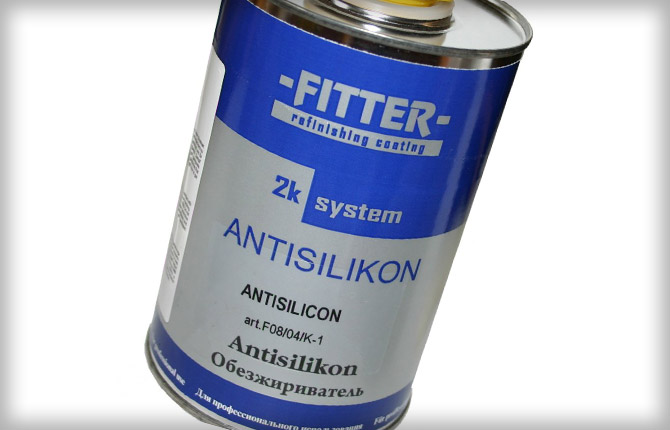
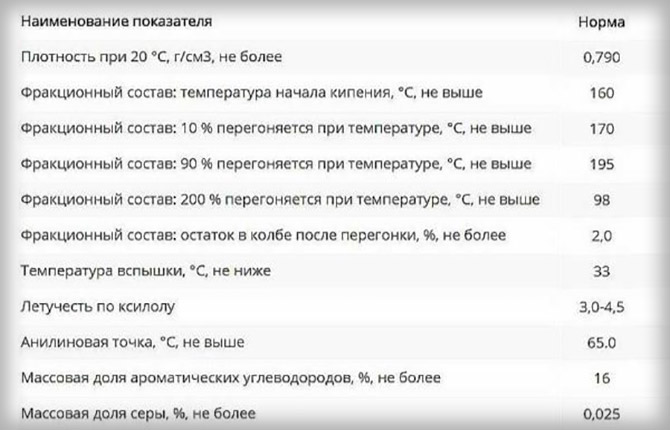





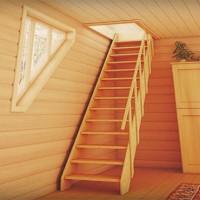
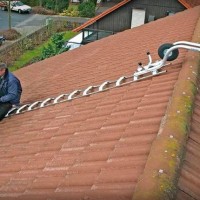

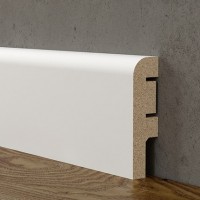
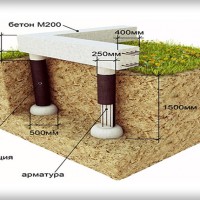




The degreasing period is 15 minutes after the film evaporates; you cannot wipe it off with white spirit and put it on a shelf. I only have 6-7 seconds between the evaporation of alcohol and the contact sticker. If you don’t have time, wipe it again.
Alcohol and acetone, well, anti-silicone. Everything else is poison.